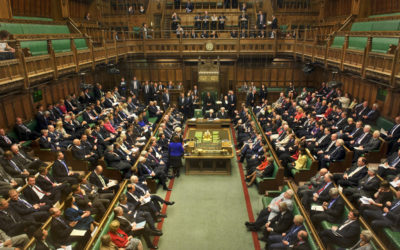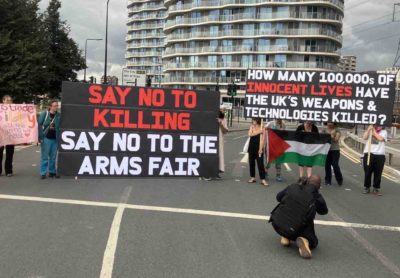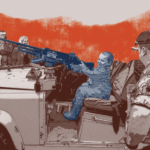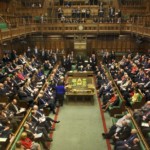Mutual militarisation: the budget and NATO spending
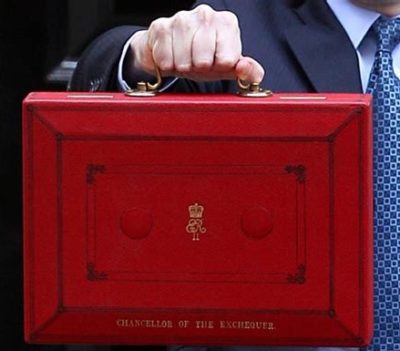
The Russian invasion of Ukraine is a flagrant and brutal violation of the most fundamental principle of international law. The initial invasion has been followed by numerous atrocities, including the bombing and shelling of civilians, the deliberate targeting of critical civilian infrastructure, massacres of civilians in conquered territory, and – for which Russian President Vladimir Putin has now been indicted – the kidnap of Ukrainian children and their transfer to Russia to be placed with Russian families.
The invasion has sent shock waves around the world (not least in poorer countries faced with soaring food prices), and has reshaped security calculations not only in Europe, but also in the Asia Pacific, another theatre of superpower competition. The response of the West has included sweeping sanctions on Russia, though still failing to close all loopholes by which Putin allies launder their plundered wealth, and massive military support for Ukraine.
Military spending increases
But it has also greatly accelerated an existing trend – in part spurred by Russia’s earlier intervention in Ukraine and annexation of Crimea in 2014 – towards higher military spending, including in the UK. The Spending Review of November 2020 included a £24 billion increase in military spending over 4 years (compared to existing levels), and now the 2023 Spring Budget has made a further £7.1 billion increase over the current and coming two years (compared to previous plans), up to 2024-25 – in addition to the UK’s military aid to Ukraine, which should be counted in most definitions of military spending, and which is expected to total £4.6 billion in 2022 and 2023. The £7.1 billion consists of an additional forecast £1.5 billion in military spending, above the projection in the Autumn Statement, in the current financial year, 2022-23, followed by an extra £2.5 billion and £3.1 billion above previous plans in 2023/24 and 2024/25 respectively, according to an analysis by Dr. Stuart Parkinson of Scientists for Global Responsibility. This means that the total amount of money Jeremy Hunt promised to the MoD back in March totalled £13.1bn.
Total MOD military spending this financial year (which excludes certain items of military spending, such as additional Treasure contributions to military pensions, as well as spending from the MOD’s own income) is projected to reach £53.1 billion. In real terms, this is 5.1% higher than in 2021-22. Most of this increase was planned as part of a major increase in capital spending – i.e. on arms and military infrastructure – for this year. This is 30% higher in real terms than in 2015, the low point before the increases that followed the first Ukraine war in 2014.
The increase will see UK military spending rise to 2.25% of GDP, with an aspiration, set out in the government’s 2023 “Refresh” of the 2021 Integrated Review, of raising this to 2.5% in the longer term, well above the NATO minimum of 2%, although extravagant pledges by the short-lived Truss premiership of reaching 3% appear, for now, to have been abandoned.
This year’s increase will actually be followed in 2023/24 by a 9% real-terms cut, based on current plans, and on inflation forecasts from the Office for Budget Responsibility, and then a 1.6% increase in 2024/25. This is mostly due to a front-loading of capital spending in the 2022-23 financial year, while recurrent spending – salaries, running costs, and operational costs – is set to fall gradually, along with planned reductions in troop numbers.
This will leave military spending in 2024-25 roughly at the same level as 2020/21, or slightly higher; not a drastic increase, but at a time when most government departments are facing substantial real terms cuts, due to the high rate of inflation and the government’s austerity-minded policies, the MOD budget stands out as receiving a privileged level of protection in the face of the economic headwinds. The budget offered little or nothing extra to Britain’s collapsing health service, or to ever-more urgent efforts to tackle climate change. The priority given to the military is very clear.
In the US, meanwhile, the Biden Administration has submitted a Defense budget request for 2023-24 of $886 billion, not counting Ukraine military aid (around $30 billion in 2022), a substantial increase on last year’s record budget, in which Congress added an extra $45 billion to the Administration’s request, itself already an increase on the previous year!
Germany, shortly after the invasion of Ukraine, announced that it would meet NATO’s target of 2% of GDP for military spending – long thought to be far from reach in the foreseeable future – by 2025, through a special €100 billion fund to be spent over the coming four years on new arms, including US F-35 stealth fighters. Other European countries have likewise announced substantial military spending increases.
From Iraq to Ukraine
The lesson NATO have drawn from the Ukraine war is clear – Russia is no longer a potential threat, but a very clear and present danger to the security of all of Europe, bent on restoring the former Russian Empire, and who knows, perhaps beyond. The only response to this must be massive military preparations to ensure western dominance, while arming Ukraine to the teeth with the goal of breaking Russia’s military power once and for all. Si vis Pacem, para Bellum. If you want peace, prepare for war.
It is impossible, when writing now about the Ukraine war and its consequences, not to think of the invasion of Iraq 20 years ago by the US-UK-Australia (or AUKUS?) alliance. Like the Russian invasion of Ukraine, an illegal war, based on deception, that caused the deaths of hundreds of thousands, and involved numerous atrocities by the occupying forces.
The Iraq war led to devastating consequences, still being felt, for the country itself and for the Middle East region. As the Arab League warned it would before the invasion, it “opened the gates of hell”. It also, like Ukraine, upended security calculations far beyond the region, and arguably helped set the world on a darker, militaristic path, of which indeed the Ukraine war itself can be seen as one of the sequelae.
For Russia and China in particular, the war demonstrated both the overwhelming degree of US conventional military dominance (even if the subsequent occupation revealed the limitations of such power once a conventional enemy is defeated), and the willingness of the US and its allies to use that power, in flagrant violation of international law, and in defiance not only of neutral or opposing powers, but even of many of its own allies. It clearly showed that the so-called “Rules-based International Order” of which western politicians are so fond of talking was one which only applied to others, and which could be broken at will when US interests suited.
This was not the first time this lesson was given, as the Kosovo war of 1999 had been a foretaste. These wars revealed to Russia and China both US capabilities and intentions, and also just how far behind they were in terms of military technology. They were faced with a world order in which the US could dictate terms on threat of overwhelming military assault, to which the only answer the target country might have was nuclear Armageddon. The lesson was that the only way not to be walked over was for Russia and China to rapidly upgrade their military capabilities. In Russia’s case, also in resisting by all means US efforts to undermine key allies, from former Soviet states to Syria.
None of this remotely justifies or excuses Russia’s horrific and illegal actions in Ukraine, nor their brutal bombing of rebel-held Syrian cities to prop up their ally Bashar al-Assad. Rather, it is to argue that Russia and China are both following the same militaristic logic as the west, that if you want peace, you must prepare for war. The problem is, when you prepare for war, more often than not the result is war, whether this was your intention or not in the first place.
Russia’s willingness to use its military power to invade and seek to conquer its neighbour is, of course, enormously concerning, especially to other neighbouring countries, like Poland, Finland, and the Baltic states, that have a history of being invaded and/or ruled by Russia. It is understandable that they sought (or are seeking) security in NATO, and are now engaged in rearmament, along with their western European allies.
But the sense of threat from Russia, resulting from their behaviour, should be tempered by the reality of their capabilities, not least as revealed by the invasion of Ukraine itself, where their war fighting has been beset by failed logistics, lack of coherence of operations, and poor morale. Even before the massive supplies of advanced western equipment started arriving, Russian forces were unable to defeat a far smaller and heavily outgunned Ukrainian enemy. Despite having far more and far better (on paper) combat aircraft, Russia has even failed to gain air superiority, let alone supremacy, over Ukraine, which is still operating Soviet-era fighters (although they have received advanced western air defences).
Moreover, NATO is still a far, far, stronger military force than Russia, accounting for over half the world’s military spending, and with US military technology, in most areas, still far outpacing Russia’s. Even European NATO members on their own outspend Russia about five to one, and likewise have considerably more forces and equipment at their disposal. Vladimir Putin is an aggressive militarist, but he is not completely irrational, and the consequences of a Russian attack on NATO members, with the strong potential for nuclear escalation, are unthinkable. The idea that NATO could not withstand and defeat any potential attack by a Russia that cannot even defeat Ukraine is palpably absurd.
Instead, the panicked rearmament being pursued by western states, along with the rhetoric of absolute Ukrainian victory, and thus of humiliating Russian defeat, as the only acceptable outcome, can only reinforce Putin’s paranoia, and even shore up support for the war among ordinary Russians, giving credence to Putin’s claim that the west seeks not peace, but the destruction of Russia. Beyond Europe, the US military build-up is likely to fuel the dangerous path of the US and China’s budding Cold War, with mutual militarisation, deepening suspicions, and a growing assumption by senior military and political figures on both sides that this contest for superpower dominance in the Pacific can only end in war – which could easily become a self-fulfilling prophecy.
Is there an alternative?
In calling for a more peaceful alternative, one should not be naive. Perhaps twenty or thirty years ago, or even ten, different policies by the west might have led to far more peaceful relations with Russia; but it is implausible that right now, cuts in military spending, reduction of arms supplies to Ukraine, and/or calls for a negotiated peace will turn Putin from an imperialist warmonger to a peace-loving good neighbour. There is no guaranteed route either to peace in Ukraine or long-term peace between the west and Russia. But I believe it is possible to attempt a different approach, one that has the imagination to think that peace is possible, and works towards it. This could include:
- Basing western military capabilities in Europe on the reality of the threat from Russia, and what might be needed to deter and defend against it, rather than simply assuming that more is always better, and driving for absolute dominance.
- Changing rhetoric on Ukraine away from absolute battlefield “victory”, and of defeating Russia, to one of securing a just peace for all.
- Working with Ukraine to put forward meaningful proposals for negotiation, that could address some of Russia’s concerns, without compromising fundamental principles of international law and justice.
- Beyond Ukraine, for the US and its allies to seek to engage China and others to halt and reverse the global arms race, cancelling projects such as the AUKUS nuclear submarine deal that escalate such an arms race.
- Engaging in meaningful efforts for multilateral negotiations leading to the abolition of nuclear weapons, in line with the Treaty for the Prohibition of Nuclear Weapons.
- Refocusing foreign policy on urgent, cooperative efforts to address climate change, over competition for military dominance.
The current path of ever-escalating mutual militarisation offers only endless war, with a very real risk of direct confrontation between nuclear powers. A better way needs to be found.
See more: human rights, legislation & policy, security, international relations, military spending
Like what you read?
> Sign up for our newsletter or blog notifications
> Support our work – from just £2 a month

